Even superheroes need funds — just look at Batman and Iron Man. So it should come as no surprise that nonprofit organizations and educational institutions on a mission to change the world rely on committed and generous donors.
While fundraisers nourish relationships with existing donors who haven’t yet reached their full giving potential, nonprofits also need to seek out new donors, regularly approaching them with the proper messaging to convert them into longtime benefactors.
An essential part of every organization’s growth strategy is finding these donors through prospect research. Prospects are individuals and organizations that a nonprofit hasn’t yet cultivated as donors. They can also be existing donors who haven’t given as much as they could.
Recruiting and managing donors can be almost as challenging for a nonprofit as fulfilling its mission. But effective prospect research is possible no matter how limited your time and resources.
What is prospect research?
Put simply, fundraisers conduct prospect research to find potential donors or learn more about their existing donor base. The goal of this research goes beyond adding names and contact information to a marketing list: It’s about developing a better understanding of which causes prospects care about, how likely they are to donate, and how to get them to donate more.
The best donor management strategies build better relationships through knowledge about prospects. This information will help you refine the way you approach them for donations.
For example, you wouldn’t ask a salaried employee for a million-dollar donation. Likewise, it would be a waste to ask a millionaire for a one-time gift of $30. Prospect research helps fundraisers secure more donations and streamline the asking process by identifying the best potential donors ahead of time as well as finding out the giving potential of existing benefactors.
Who conducts prospect research?
Generally, all sorts of nonprofit organizations do prospect research, including advocacy nonprofits, religious groups, academic institutions, and charities.
However, prospect research can be a lot of work. It’s generally best to have a designated individual handle it, especially someone with strong research and reporting skills.
Another option is to work with a prospect research consultant outside of your organization. That way, you can ensure that the information will come from someone with the experience and expertise to know which prospects are a good match for your needs.
What are the different types of prospects?
One of the goals of prospect research is to categorize potential donors by the amount or types of donations they might give. This helps you better understand the potential value of the relationship, how to prioritize it, and how to solicit appropriate amounts.
During prospect research, you can sort potential donors into the following categories.
Individual donors
Individual donors are the most common type of donor, but they won’t necessarily be the largest source of revenue — even as a category. They often fall into one of three types:
1. One-time donors. As the name implies, one-time donors will give to your organization only once. Perhaps they attended a charity event or a fundraising campaigner approached them on the street and inspired them to give. You should retain one-time donors in your databases since they clearly care about your cause. They’re ideal candidates for future engagement and gifts.
2. Annual givers. Often, annual givers will donate in conjunction with an event they like to attend, such as a holiday gala. Though they don’t give frequently, they do give regularly, and it’s common for their gifts to be substantially larger than the average individual donor’s.
3. Recurring donors. A newer category is recurring donors. They give as if the charity were a subscription service by setting up automatic monthly debit or credit card donations. The gifts may be as small as those that one-time givers make, but when many of these small donations come in regularly, it’s much easier for organizations to project their revenue and budget accordingly.
Major donors
Studies have shown that more than 88 percent of all donations come from just 12 percent of givers. These 12 percenters are the major donors providing most of an organization’s revenue and growth funding. Though it’s an incredibly important category, relationships with major donors can also be the most challenging to foster.
Major gifts can come in the form of windfall financial donations or funds for a specific project (this is how people get buildings named after them). Major donors fall into similar subtypes as individual donors — but when they give, they give big. They may be able to provide large sums of money on a one-time or annual basis or commit to hands-on involvement so they can remain informed about what their money is doing.
Communication with these donors should be informative, with detailed updates, as opposed to the traditional outreach that calls for more donations. An organization’s leadership should personally develop relationships with major donors so that they’re well taken care of.
Corporate donors
Corporate donors are one type of major donor. However, they aren’t likely to give in support of a particular cause — they often tie their gifts to marketing and public relations campaigns.
A major gift from a corporation will probably involve a press release, an event, or some sort of co-branded effort. Depending on the size or type of organization, corporate donors could provide the opportunity for greater exposure, which can be just as valuable, if not more so, than financial gifts.
When you’re building a profile of corporate prospects, it’s important to understand when their fiscal year ends, as the months leading up to that date will be when they’re most likely thinking about donations.
Foundations
Foundations establish private funds for the sole purpose of donating money to nonprofit organizations. Individuals, families, and other entities create these tax-exempt pools of money to fund worthy causes and missions. Depending on the laws they have to follow to remain tax-exempt, they may be required to give a specific amount annually or quarterly.
Organizations don’t often approach these prospects in the same way they do others since many foundations focus on a specific area that they’re most interested in supporting and offer grants to worthy organizations. The only way to secure these grants is to fill out the application and outline the potential impact the funding could have.
What kind of information should prospect research uncover?
Prospect research gleans a lot of information, but it’s not all valuable. Remember, the goal is to identify new donors, determine the potential value of the relationship, and assess the best way to approach them.
You should focus your prospect research on eight data categories.
Previous donations
Research shows that past giving is the biggest indicator of future giving. If a donor has given to your organization before, they’re interested in your cause or institution. This could indicate that your organization’s message resonated with them more than the others in your field.
Leverage this existing relationship and take it to the next level. Look at how recently these people made their last donation, how often they give, and how much they’ve given in the past. This information can help you determine how much to ask for in the future as well as how often.
If you maintain records of their past donations, you may thank the donors for the total amount they’ve given and provide a recap of what their funds have helped your organization accomplish. Acknowledging past contributions is a great way to form deeper emotional connections with donors.
The best part about this type of data is that it’s available for free because your organization keeps it.
Donations to similar organizations
Because past donations can predict future gifts, any donor who gives to a competing organization has an affinity with your cause, making them a great potential donor — if you approach them with the right messaging.
Information on these donations can be difficult to locate, though, as few regulations require nonprofits to publicly disclose their donors. Even when you find this information in an annual report, you may discover that the organization doesn’t make it available for long.
Political donations
Like past donations to other organizations, political giving can show interest in a particular cause. For example, if a politician campaigned on a platform centered on ending homelessness or poverty, their largest donors are also likely concerned about those issues.
If your organization is involved in poverty-relief efforts, that makes these political donors candidates for your prospect outreach, and you can leverage their shared interests when you approach them. What’s more, when someone gives to a political campaign, it indicates that they’re interested in using their money to make a difference.
Best of all, this information is relatively easy to find. Federal Election Commission regulations require campaigns to report the name, occupation, address, and donation date of each donor. All this information is available at fec.gov.
Board membership and philanthropic involvement
Foundation, nonprofit, and other institutional board members understand more than anyone how valuable giving is to the world. In fact, many board members donate their own funds to the organizations they serve.
Knowing whether a prospect is involved in other nonprofit endeavors allows you to modify how you approach them, increasing the chances of a successful solicitation and the start of a rewarding relationship. High-ranking members of these organizations are also likely to refer their friends and associates as donors as well.
Keep in mind, though, that members of an organization that directly competes with yours are unlikely to be receptive to solicitation.
Fortunately, nonprofits and foundations are required to publicly disclose who sits on their board of trustees. GuideStar has made this information available for free with a search function that pulls data from every major organization.
Stock holdings
One of the biggest indicators of wealth and giving capacity is an individual’s stock holdings. Ownership in publicly traded companies shows a person is financially savvy and interested in putting their money to use. But this alone isn’t an indicator of philanthropic behavior. Just because they have the resources to make donations doesn’t mean they will.
Publicly traded companies report this information to the U.S. Securities and Exchange Commission (SEC). Its EDGAR database allows users to research investors and the financial value of their holdings.
Business affiliations
Understanding a prospect’s professional life is a way to get more insight into their financial position. By understanding where they work and their role at the company, you can extrapolate their income and better understand their potential giving capacity.
However, just as with information about stock holdings, high earnings and wealth don’t indicate an interest in philanthropy.
Real estate
Substantial real estate holdings are also an indicator of wealth and potential giving capacity. Financially secure individuals are more likely to make charitable donations, if not because they have a passion for a cause, then at least for the tax write-offs.
Real estate ownership is one of the more challenging and time-consuming areas to research. A good place to start is Zillow, which often lists owners and property values. A local tax assessor’s office could be another great resource for finding information about wealthy property owners, since it stores a record of historical purchase prices and property values.
Most important: Contact information
None of the data you uncover through your prospect research will mean anything without the fundamentals: personal contact information. You need this to send prospects marketing materials, solicit donations, or invite them to events.
Your prospect research should uncover each potential donor’s full name, email address, phone number, mailing address, spousal information, and other identifiers that will help you build a complete profile. The more you know about them, the easier it will be to research other areas of their lives. For example, their mailing address will provide some insight into their financial status based on property values.
Should your prospect research go deeper than wealth screening?
Some of the research points in the previous section focused on wealth indicators. Many companies offer separate wealth screening services, but this represents only a small part of an overall prospect research strategy. Wealth screenings are limited to an individual’s giving capacity and don’t offer any insight on the likelihood they’ll donate.
The danger of only conducting wealth screenings is that they can produce a list of potential donors who have absolutely no interest in your cause or in philanthropy in general.
How do you conduct prospect research?
Now that you understand what prospect research is and what information you’re trying to obtain, let’s go over how to do it.
Prospect research can be time-consuming. Whether you outsource or do it in-house will depend on your budget and staff availability. If you lack the resources to conduct prospect research internally, screening and consulting companies can find well-vetted prospects for you.
If you do have the resources, follow these steps to conduct prospect research in-house.
Create a prospect research strategy
The best way to guide your prospect research is to clearly understand your goal. Perhaps you’re trying to reach a specific fundraising amount through major gifts, or maybe you want to fulfill a quota for new prospects in your pipeline. Maybe your goal is to find prospects who are likely to give during the holidays.
Whatever the case, goals can help focus your efforts and prevent distractions. With so much information out there to get lost in, the more defined your goal, the narrower your search criteria will be. Even the most well-funded and staffed organization won’t be able to achieve anything in prospect research without a clear focus.
To design your prospect research strategy, focus on these tasks:
- Define the goal of the research.
- Specify the parameters you want to focus on.
- Create a research timeline.
- Assign the relevant employees and departments.
Clean your database
One of the most efficient ways to conduct prospect research is to go through your data on past donors and past research efforts. However, it’s only useful if it’s up to date and relevant. Ensure that the contact information is accurate, the giving history is up to date, and all interactions are properly recorded so you can make the best ask once the research is complete.
Your data doesn’t have to be perfect. Just focus on the areas most relevant to the current prospect research project.
Many customer relationship management (CRM) programs and donation management platforms are designed to help organizations keep track of donors. These tools can serve as a database to store prospects and then organize and streamline your fundraising efforts once it’s time to reach out to them.
Collect new prospect information
For prospect research projects focused on finding new potential donors, the next step is to use the publicly available information mentioned in the research data section.
Comprehensive nonprofit database GuideStar offers information on more than 1.8 million organizations, including financials and board leadership.
DonorSearch is a robust database of millions of donors and philanthropic transactions. The tool has wealth screening capabilities but goes much deeper, providing insight on what causes interest donors most and how likely specific donors are to give.
Political donations and SEC records about stock transactions can help researchers identify wealthy prospects. Social networks such as LinkedIn often list various company stakeholders and ways to contact them.
Analyze the data
Once the research is complete, you’ll have a new list of prospects as well as thorough profiles of them. These profiles will include information about their previous charitable and political donations, their involvement with other nonprofits, and an estimate of their net worth or income, among other relevant details.
Study this data to understand which prospects are most likely to give and how much their donation might be. For example, high-net-worth individuals with a history of donating to charities or sitting on nonprofit boards are more likely to donate than an individual with even greater net worth but no history of philanthropy.
This data can be quite complex to analyze and act on. Platforms like DonorSearch simplify this process by assigning prospect scores to each individual based on those same philanthropic indicators.
Categorize for stewardship
Once you better understand each prospect, you’ll know how to prioritize them. Would this prospect most likely respond to requests for individual donations, or do they have a history of being a recurring donor? Does the prospect have the potential to be a major donor? Are there opportunities that your organization could provide them in exchange for a major gift?
You also need to determine the best way to approach them. Would this person respond best to emails, event invitations, or phone calls?
Messaging strategy is another aspect to consider. If this prospect already donates to similar organizations, a pamphlet educating them about the cause would be useless. However, material that highlights how your organization is different from others in your field could be incredibly effective.
Figure out where each of these new prospects belongs in your existing stewardship strategy and put them in the pipeline so the solicitation process can begin.
Top prospect research software tools
1. iWave

iWave is a robust fundraising software that offers multiple features and resources for your fundraising needs. With iWave, you have access to multiple databases, wealth screening tools, and even artificial intelligence to build your prospect lists.
This platform is perfect for organizations that can’t dedicate a lot of staff time to prospect research, as iWave’s data and automation does a chunk of the work for you. Integrations with other software tools like Salesforce, Raiser’s Edge NXT, and DonorPerfect are also available.
iWave’s plans start at $3,745 per year, and you can request a free trial. It also offers a free demo.
2. DonorSearch

DonorSearch is another software tool that combines artificial intelligence with prospect research. DonorSearch’s algorithms search donors’ giving history, wealth data, and fit with your organization’s mission to provide sound prospects for ongoing support.
Another great feature is ProspectView Online, which you can use to research and analyze prospects. DonorSearch also uses an algorithm to predict donors’ giving capacity, so your nonprofit can make informed decisions.
This platform includes integrations with other apps such as Kindful, Salesforce, Bloomerang, and DonorPerfect.
Contact DonorSearch to request a demo and pricing details.
3. Windfall

Windfall focuses on democratizing data, so your organization can get a better understanding of your audience. Like the other platforms on this list, Windfall features wealth screening and machine learning, so an algorithm can help predict how a prospect will donate. It also boasts marketing resources like lead scoring and CRM integrations.
Contact Windfall for a demo and pricing details.
4. Instrumentl

Instrumentl focuses on grantseeking, and grants are another great way to acquire funding. This platform includes a database and an algorithm that will match you with the right grant makers. Of course, you can always search for grants on Instrumentl yourself too.
Instrumentl’s pricing starts at $179 per month when billed annually. It offers a 14-day free trial.
5. WealthEngine

WealthEngine offers an array of products and services to help you with your prospect research, including database tools, automated insights on prospects, and predictive lead scoring. What’s more, WealthEngine lets you create your own model of the right donor and uses that to help find your best matches.
This software also utilizes API integrations, so you can connect with Salesforce, Ellucian, and more to make your workflows more productive.
Contact WealthEngine online to request a demo and for pricing details.
How can Jotform help you keep more of your donations?
As more financial transactions occur online, it’s imperative that organizations have convenient ways to collect funds through their website, email campaigns, and social media. In fact, revenue from online donations increased by 23 percent in 2020, and this number is expected to continue growing.
Jotform’s wide variety of online donation forms make it easy to collect one-time and recurring donations from the public. Even more important, these forms integrate with over 30 payment processing services, enabling organizations to collect payments by credit and debit cards using platforms like PayPal, Square, and Stripe.
With Jotform, you can even build your own no-code, shareable donation app, at no additional cost. Just use Jotform’s app builder to create an app from scratch or use one of our templates, then add the Donation Box element to add payment integrations, a donation goal tracker, and custom donation amounts. Share your app in a few clicks through a dedicated link or a QR code. What’s more is that absolutely no coding skills are necessary — just drag and drop.
Jotform offers a 50 percent discount to eligible nonprofits, so more funds go into your coffers. With Jotform, you reap the most rewards — and after working so hard to conduct your prospect research, you should.



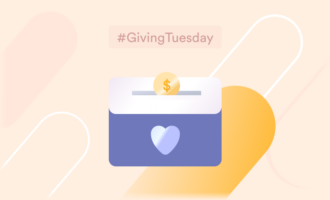




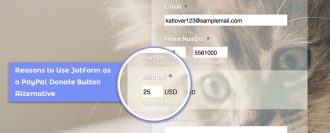


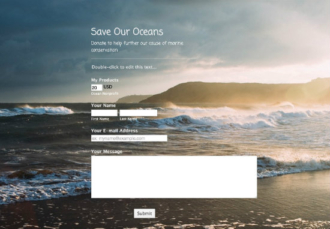




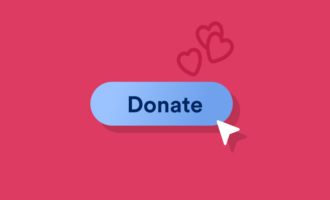

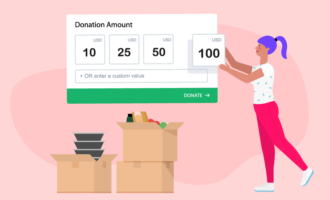

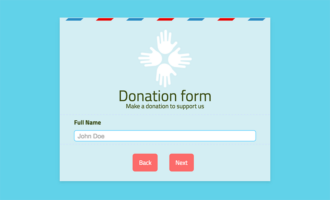


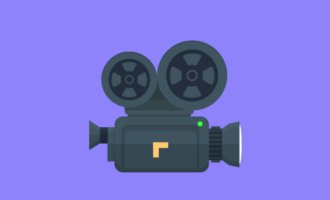





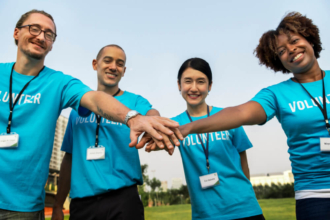


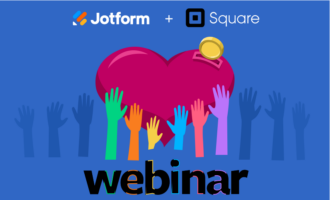





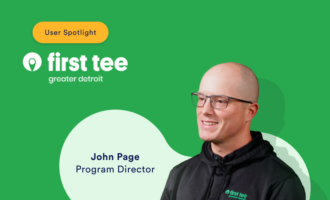

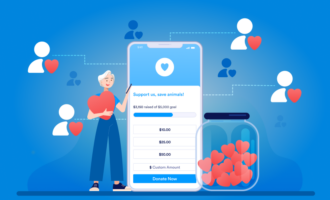



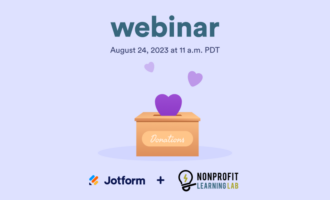
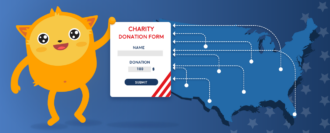




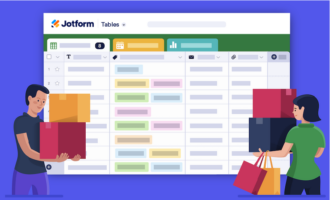
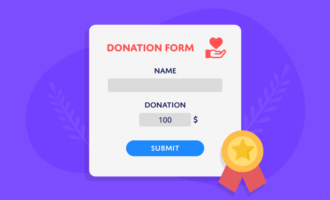







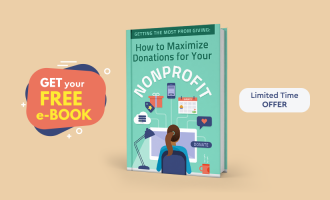


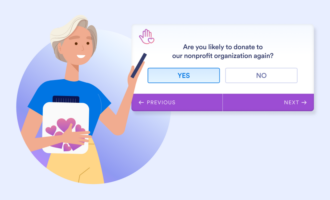

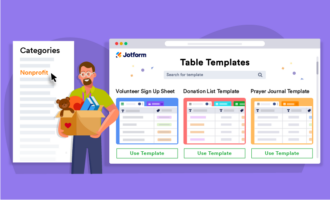

Send Comment: